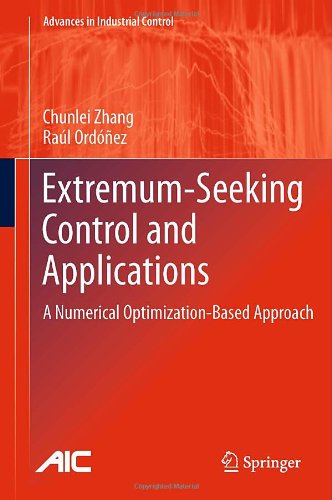

Most ebook files are in PDF format, so you can easily read them using various software such as Foxit Reader or directly on the Google Chrome browser.
Some ebook files are released by publishers in other formats such as .awz, .mobi, .epub, .fb2, etc. You may need to install specific software to read these formats on mobile/PC, such as Calibre.
Please read the tutorial at this link: https://ebookbell.com/faq
We offer FREE conversion to the popular formats you request; however, this may take some time. Therefore, right after payment, please email us, and we will try to provide the service as quickly as possible.
For some exceptional file formats or broken links (if any), please refrain from opening any disputes. Instead, email us first, and we will try to assist within a maximum of 6 hours.
EbookBell Team

5.0
70 reviewsExtremum-seeking control tracks a varying maximum or minimum in a performance function such as output or cost. It attempts to determine the optimal performance of a control system as it operates, thereby reducing downtime and the need for system analysis. Extremum-seeking Control and Applications is divided into two parts. In the first, the authors review existing analog-optimization-based extremum-seeking control including gradient-, perturbation- and sliding-mode-based control designs. They then propose a novel numerical-optimization-based extremum-seeking control based on optimization algorithms and state regulation. This control design is developed for simple linear time-invariant systems and then extended for a class of feedback linearizable nonlinear systems. The two main optimization algorithms – line search and trust region methods – are analyzed for robustness. Finite-time and asymptotic state regulators are put forward for linear and nonlinear systems respectively. Further design flexibility is achieved using the robustness results of the optimization algorithms and the asymptotic state regulator by which existing nonlinear adaptive control techniques can be introduced for robust design. The approach used is easier to implement and tends to be more robust than those that use perturbation-based extremum-seeking control. The second part of the book deals with a variety of applications of extremum-seeking control: a comparative study of extremum-seeking control schemes in antilock braking system design; source seeking, formation control, collision and obstacle avoidance for groups of autonomous agents; mobile radar networks; and impedance matching. MATLAB®/Simulink® code which can be downloaded from www.springer.com/ISBN helps readers to reproduce the results presented in the text and gives them a head start for implementing the algorithms in their own applications. Extremum-seeking Control and Applications will interest academics and graduate students working in control, and industrial practitioners from a variety of backgrounds: systems, automotive, aerospace, communications, semiconductor and chemical engineering.